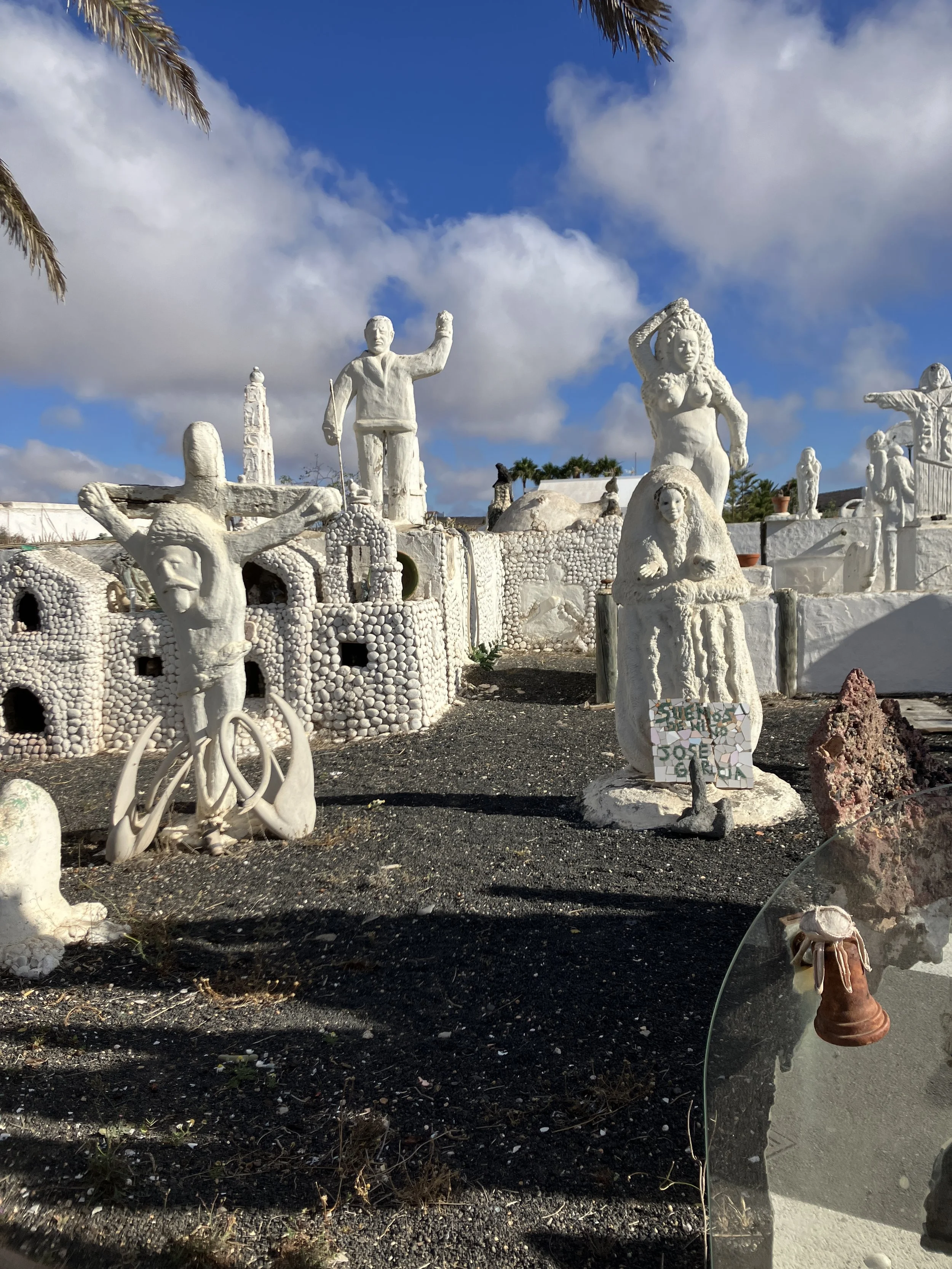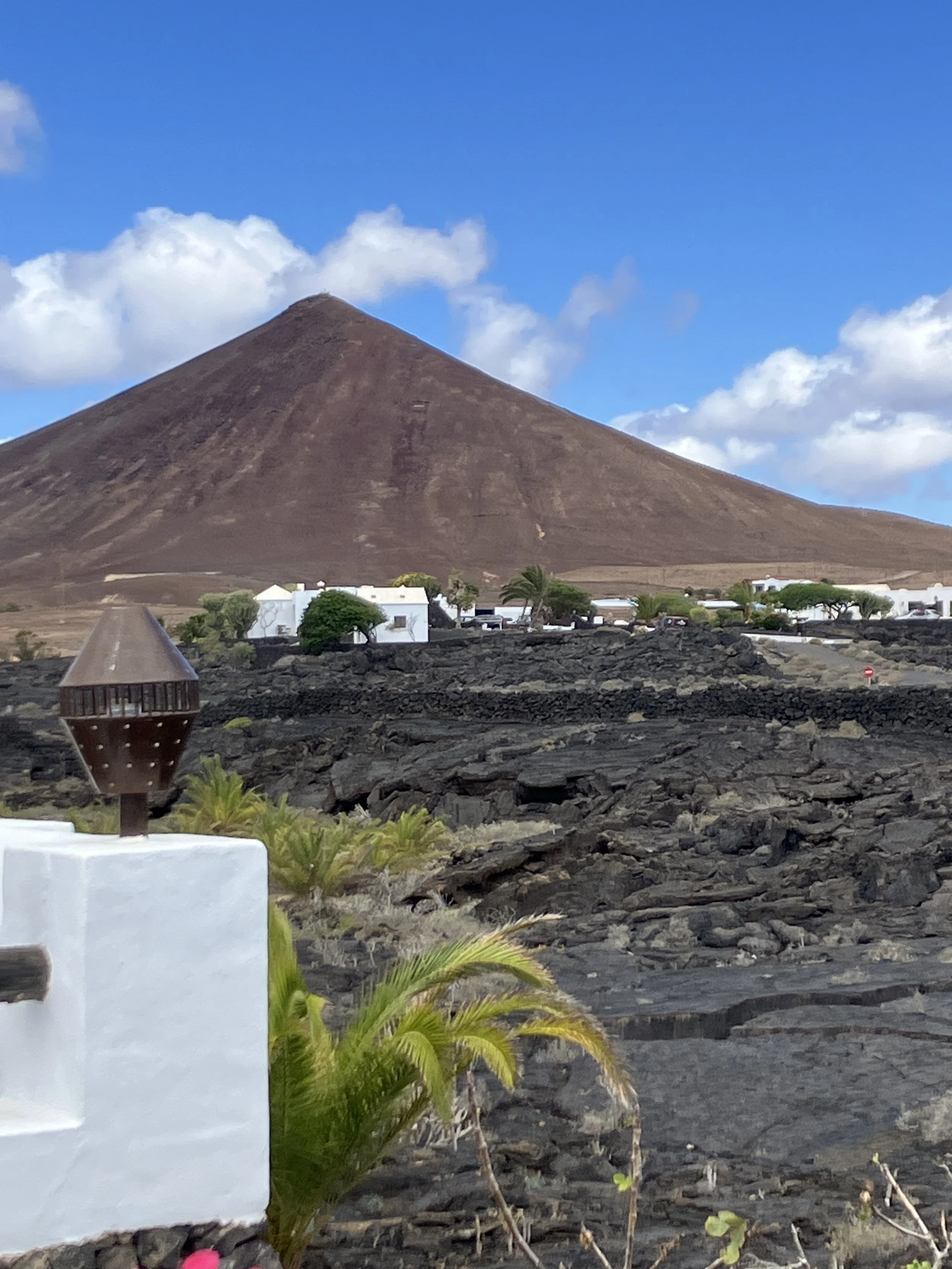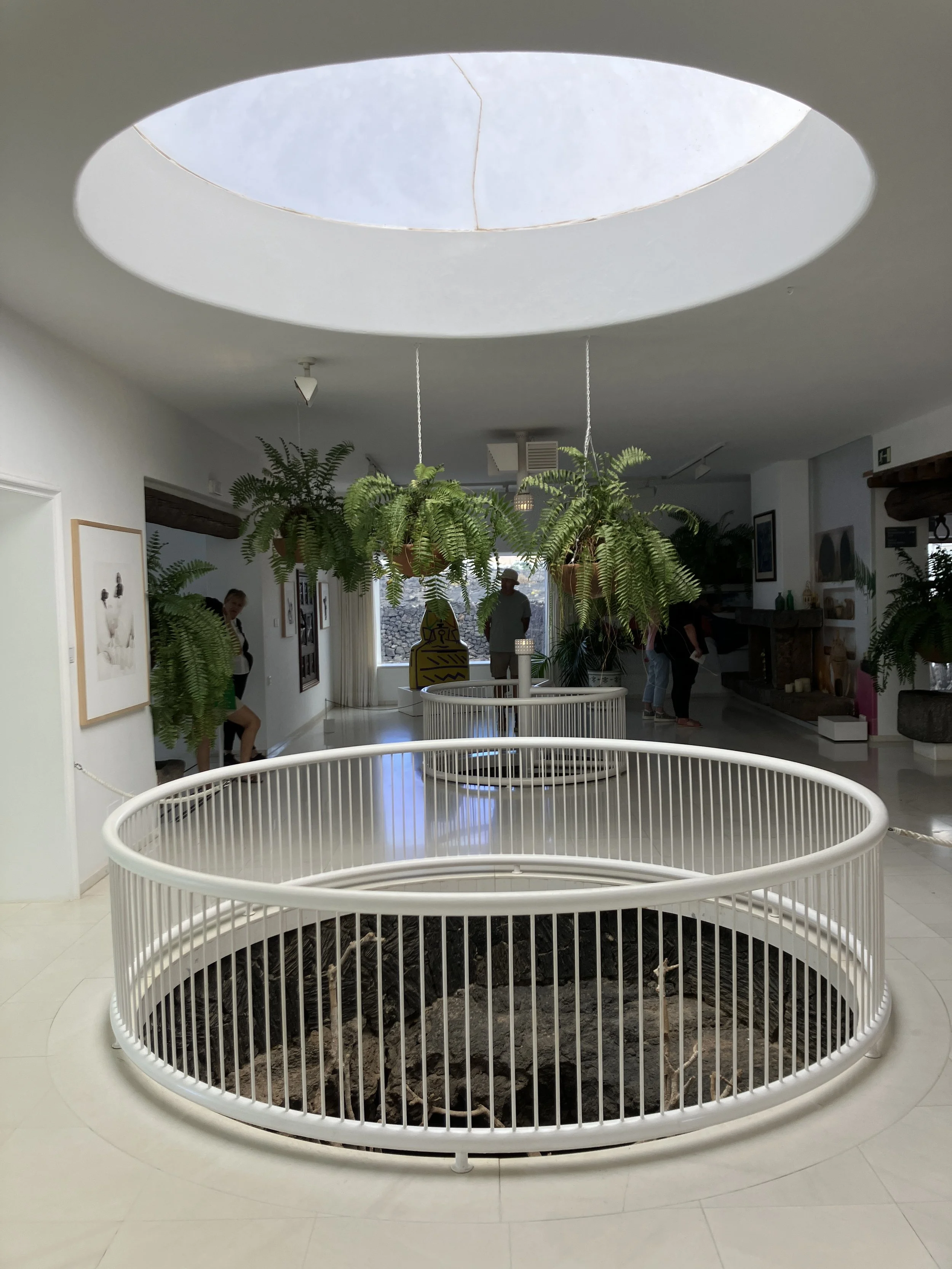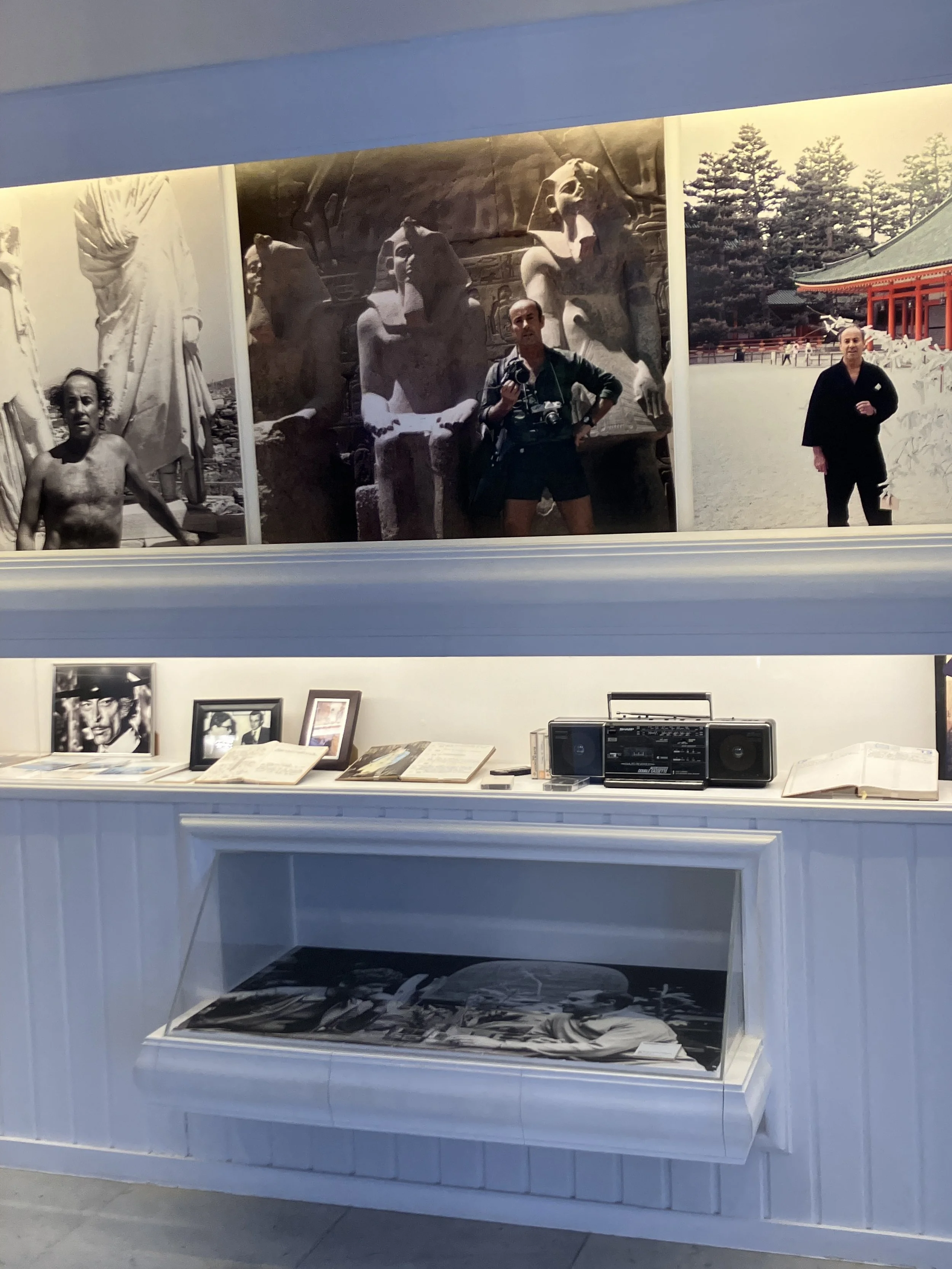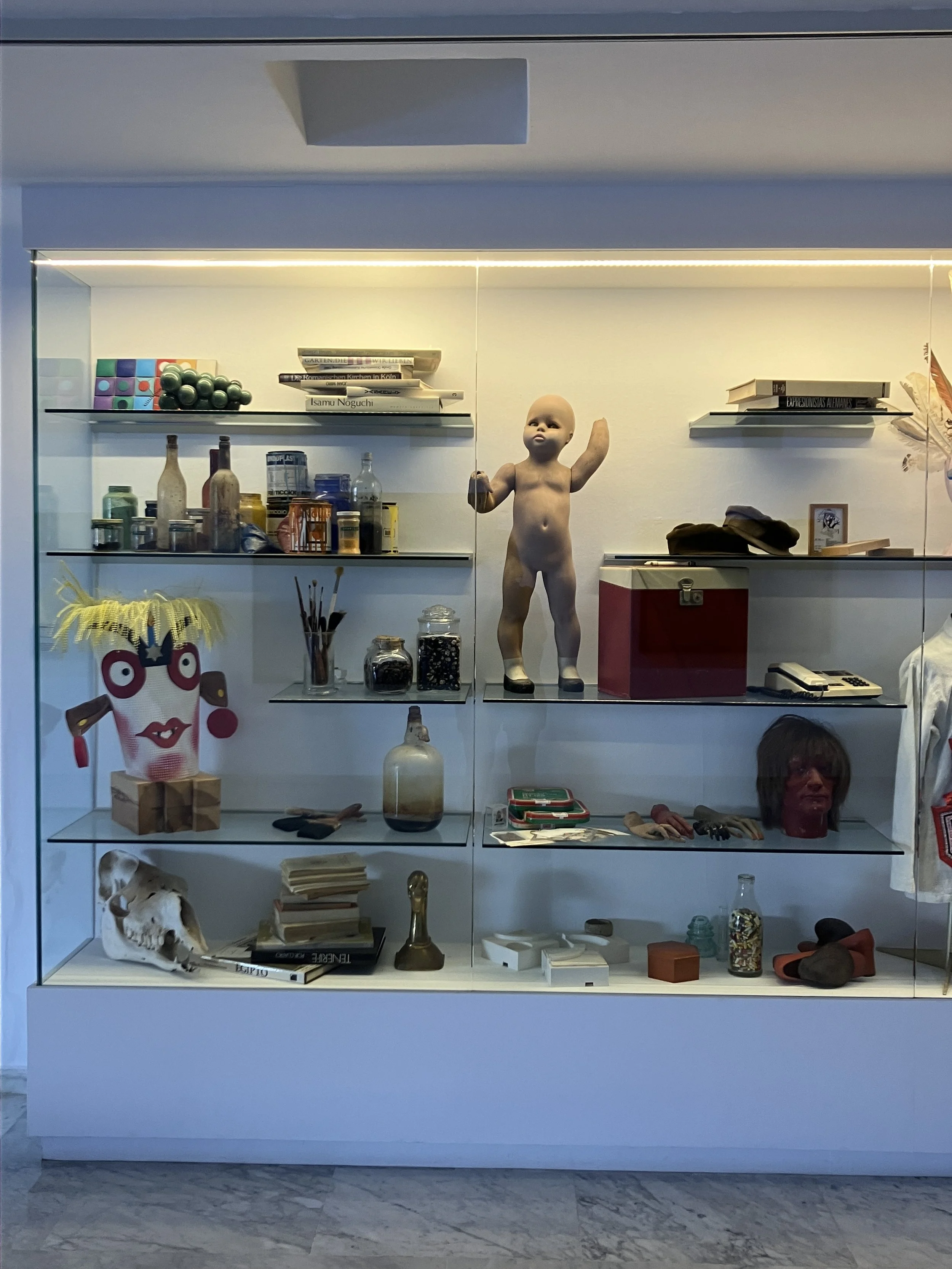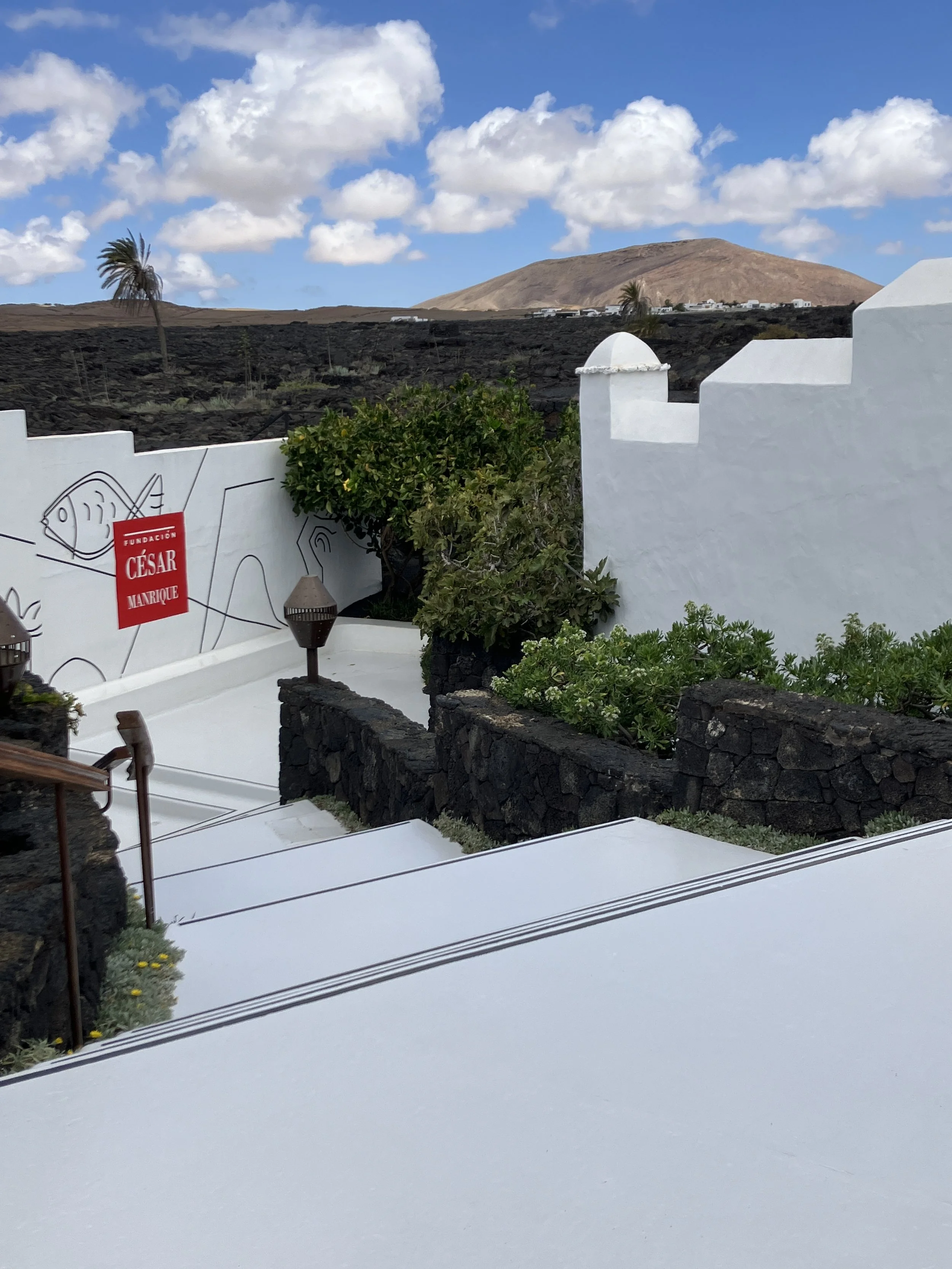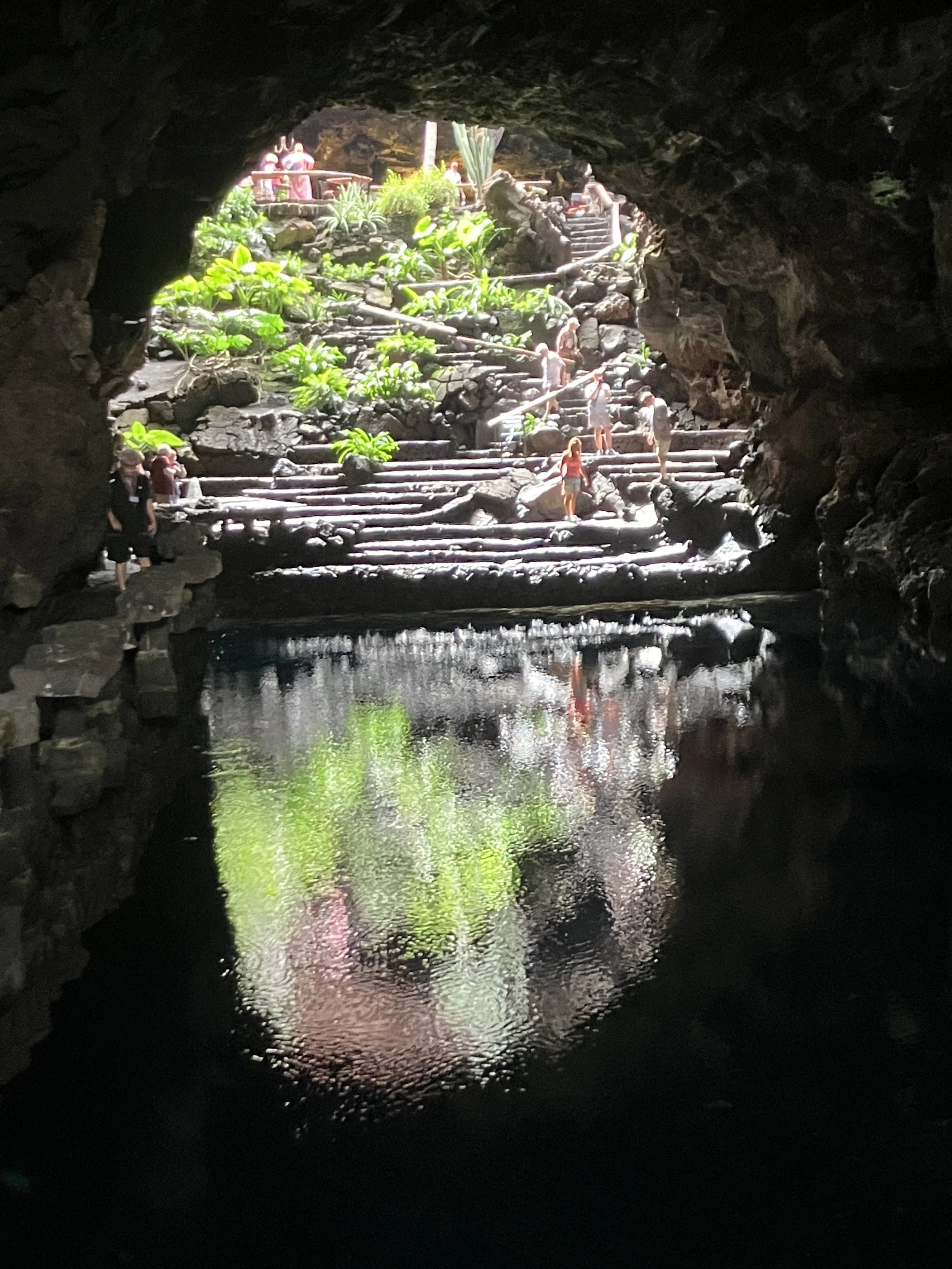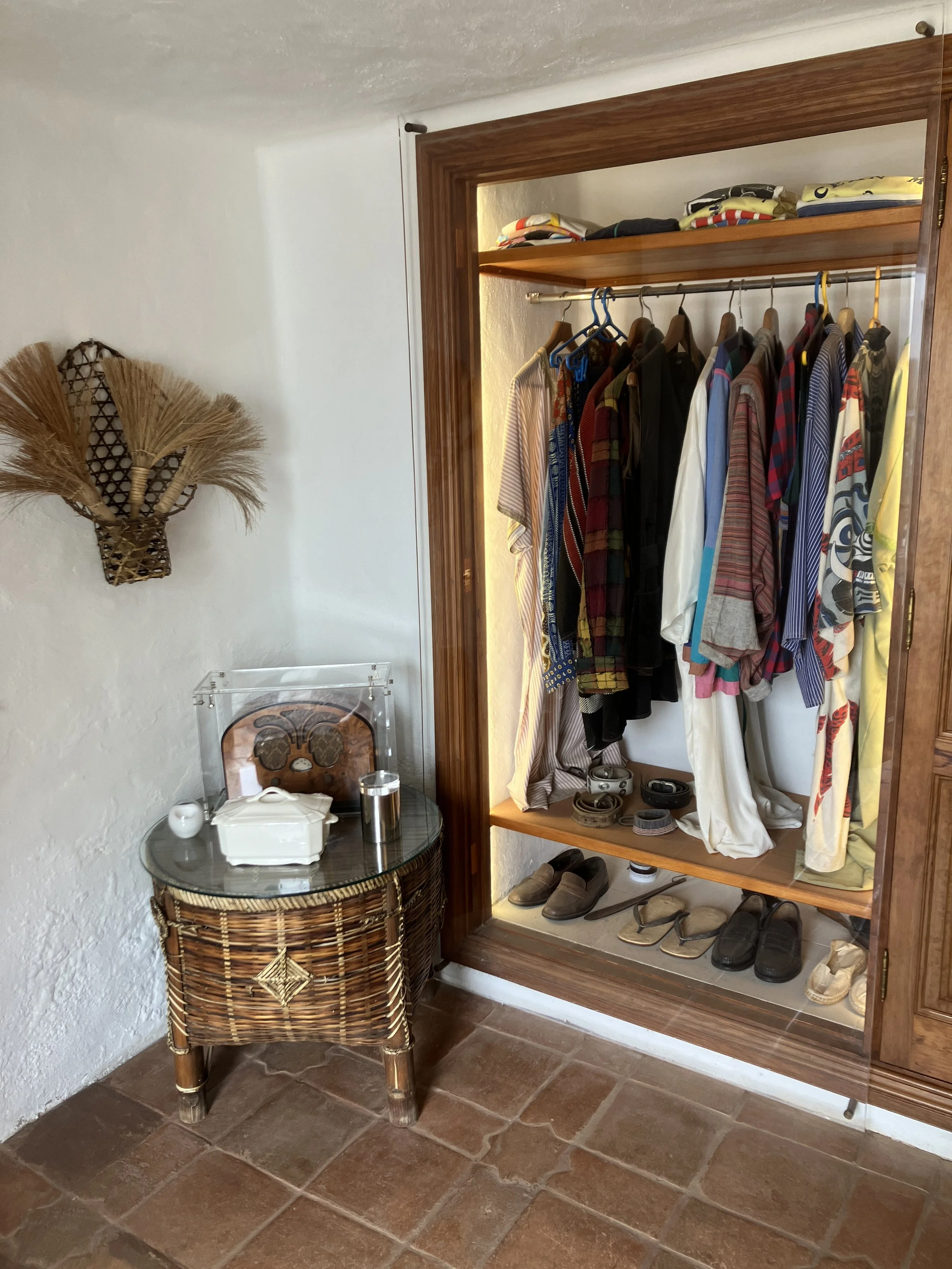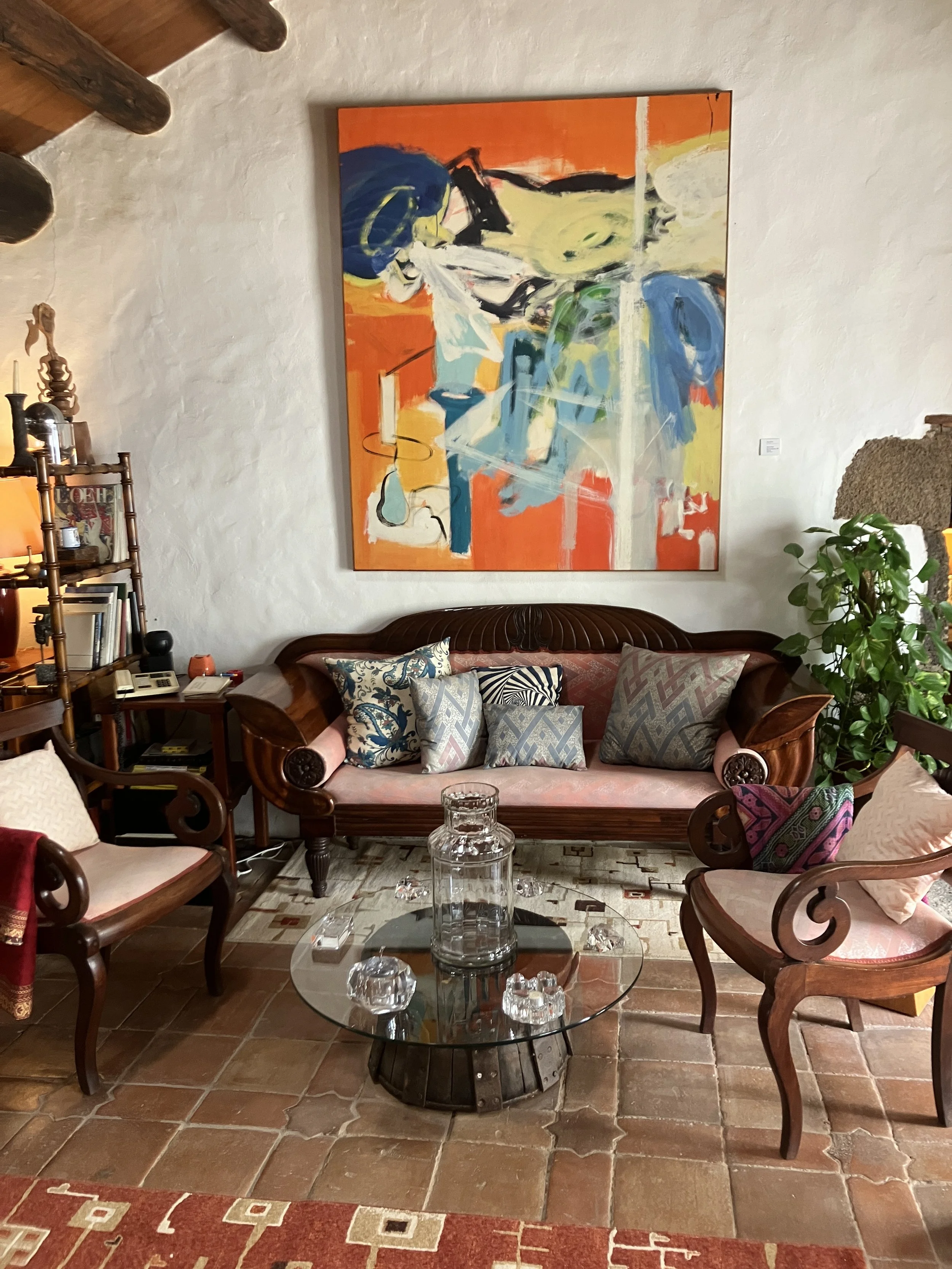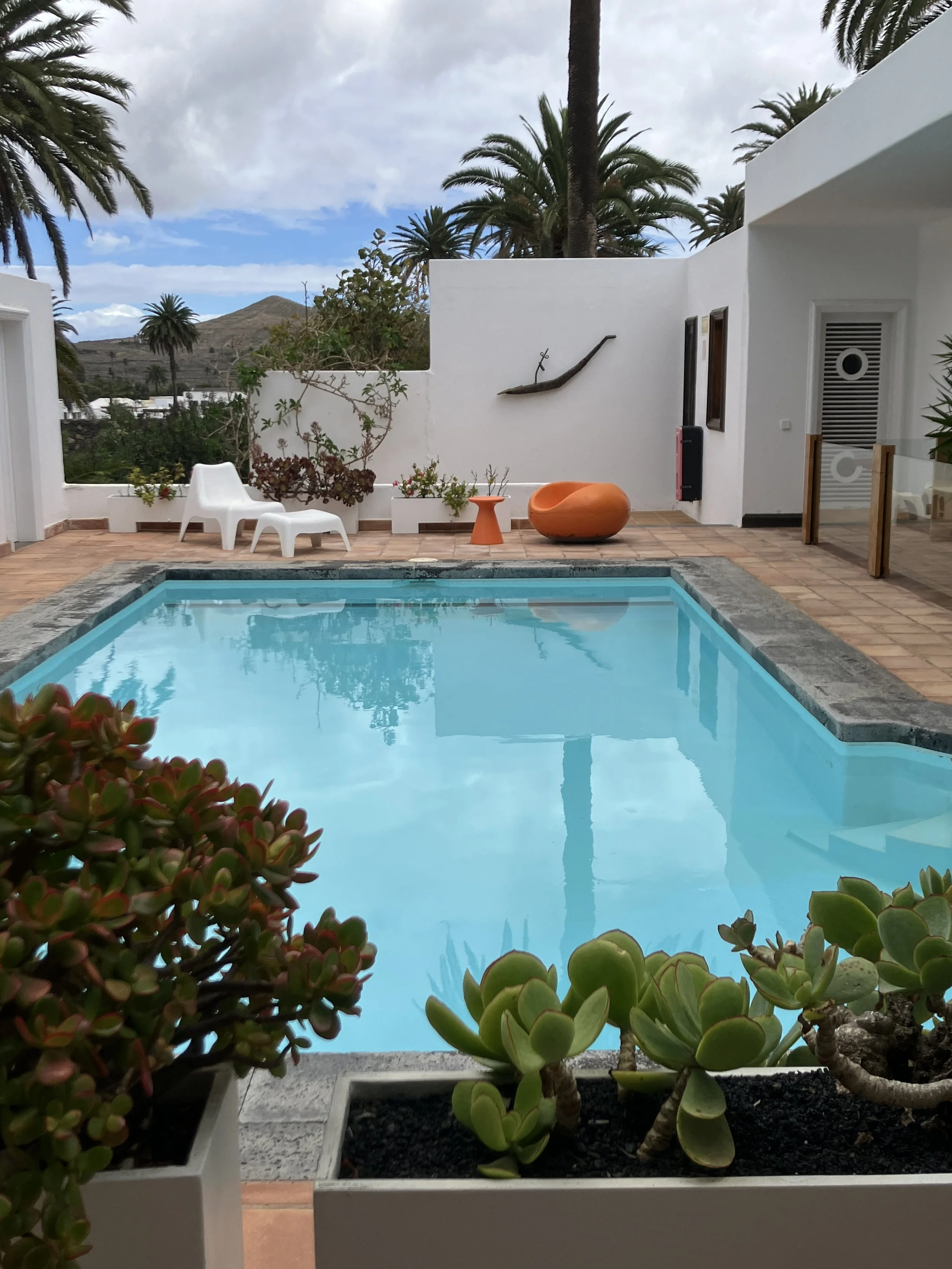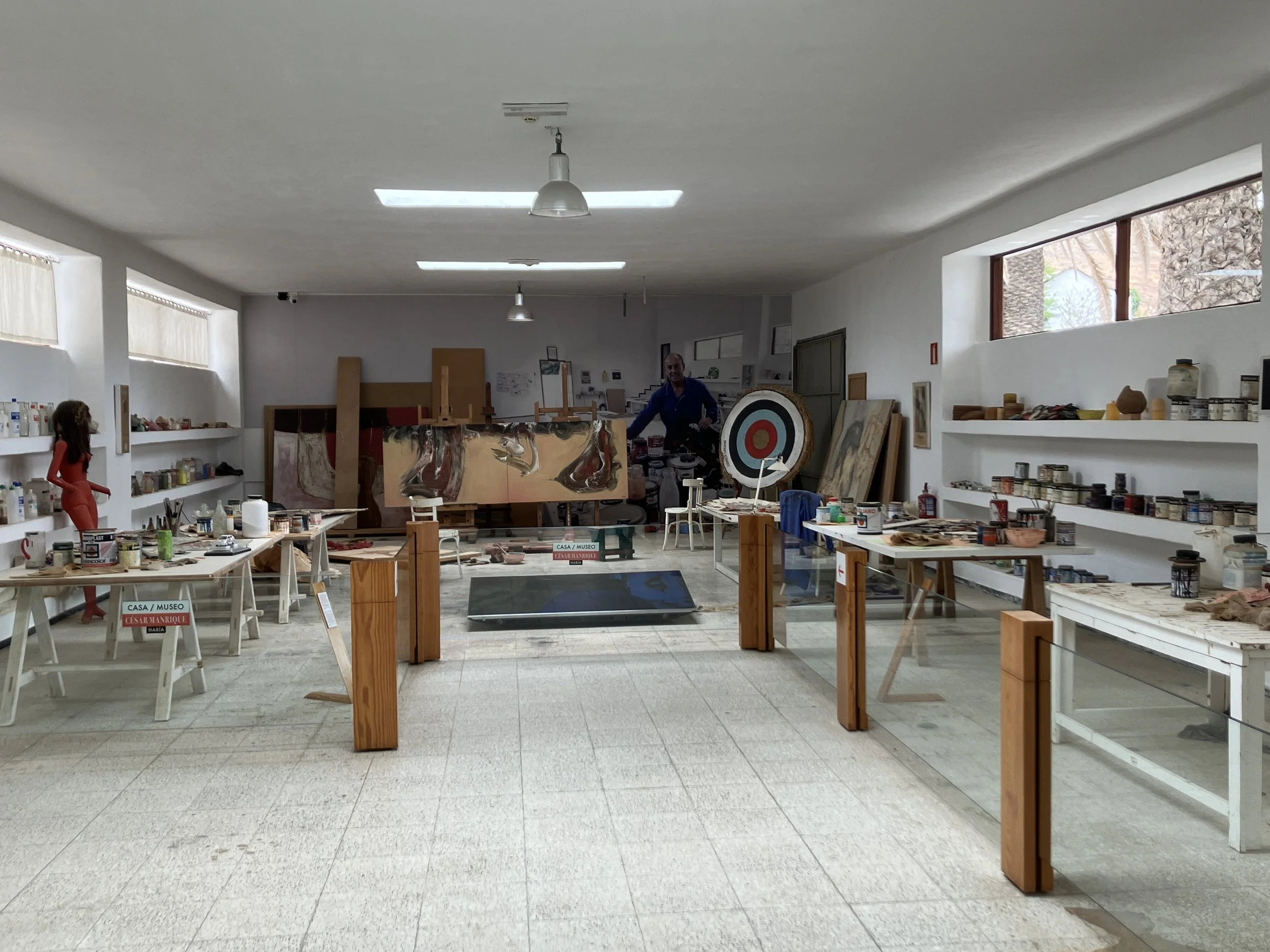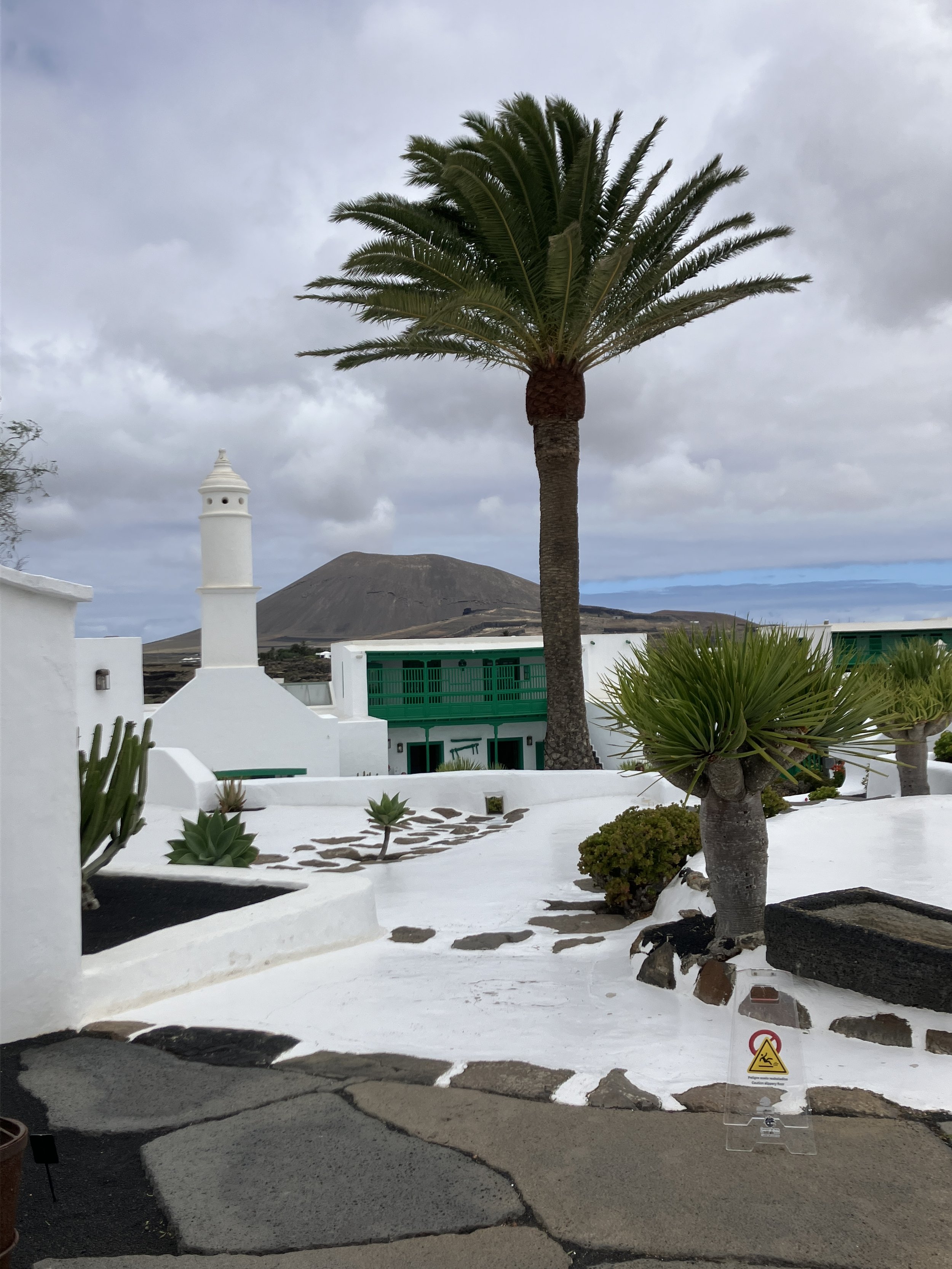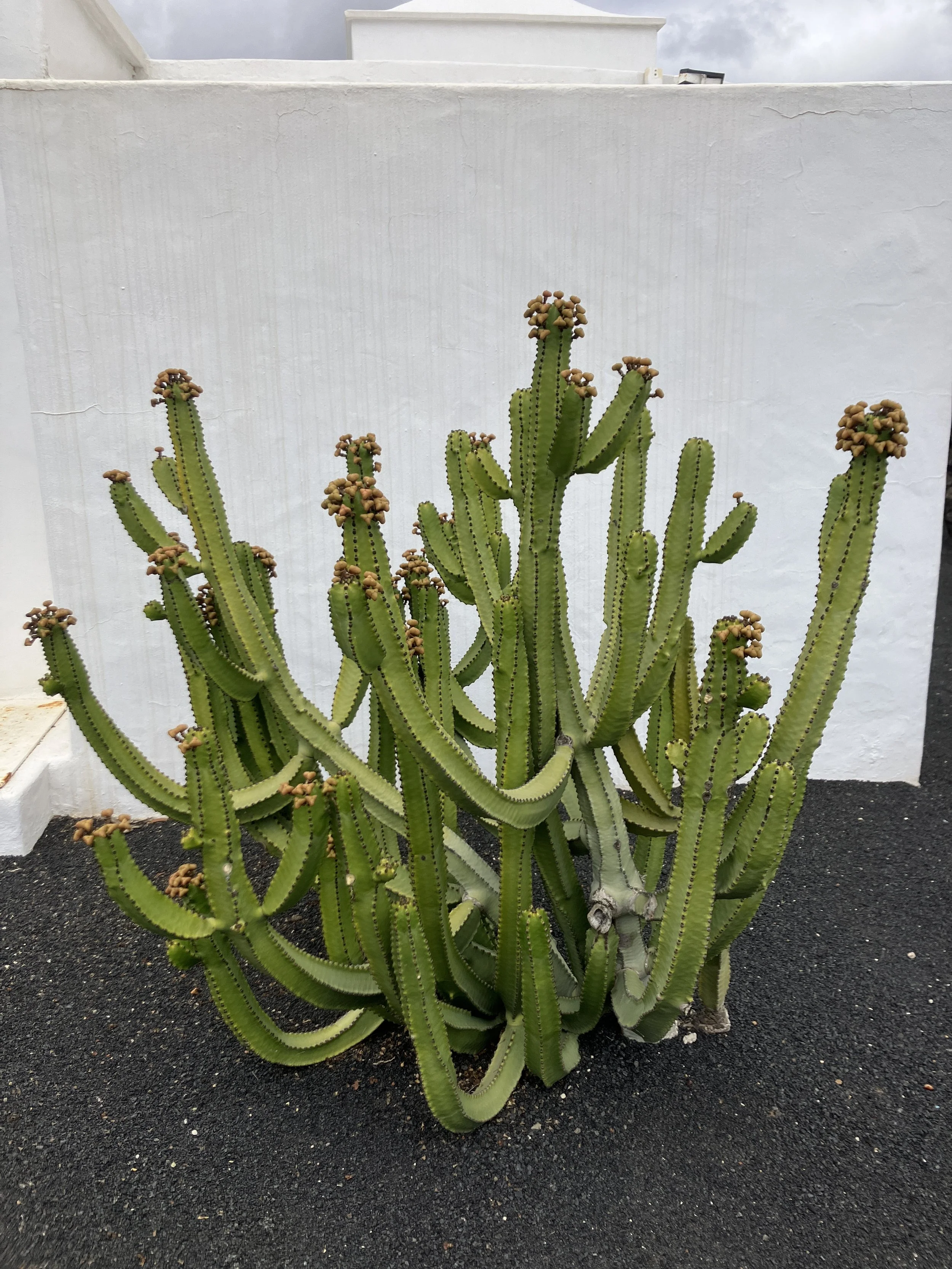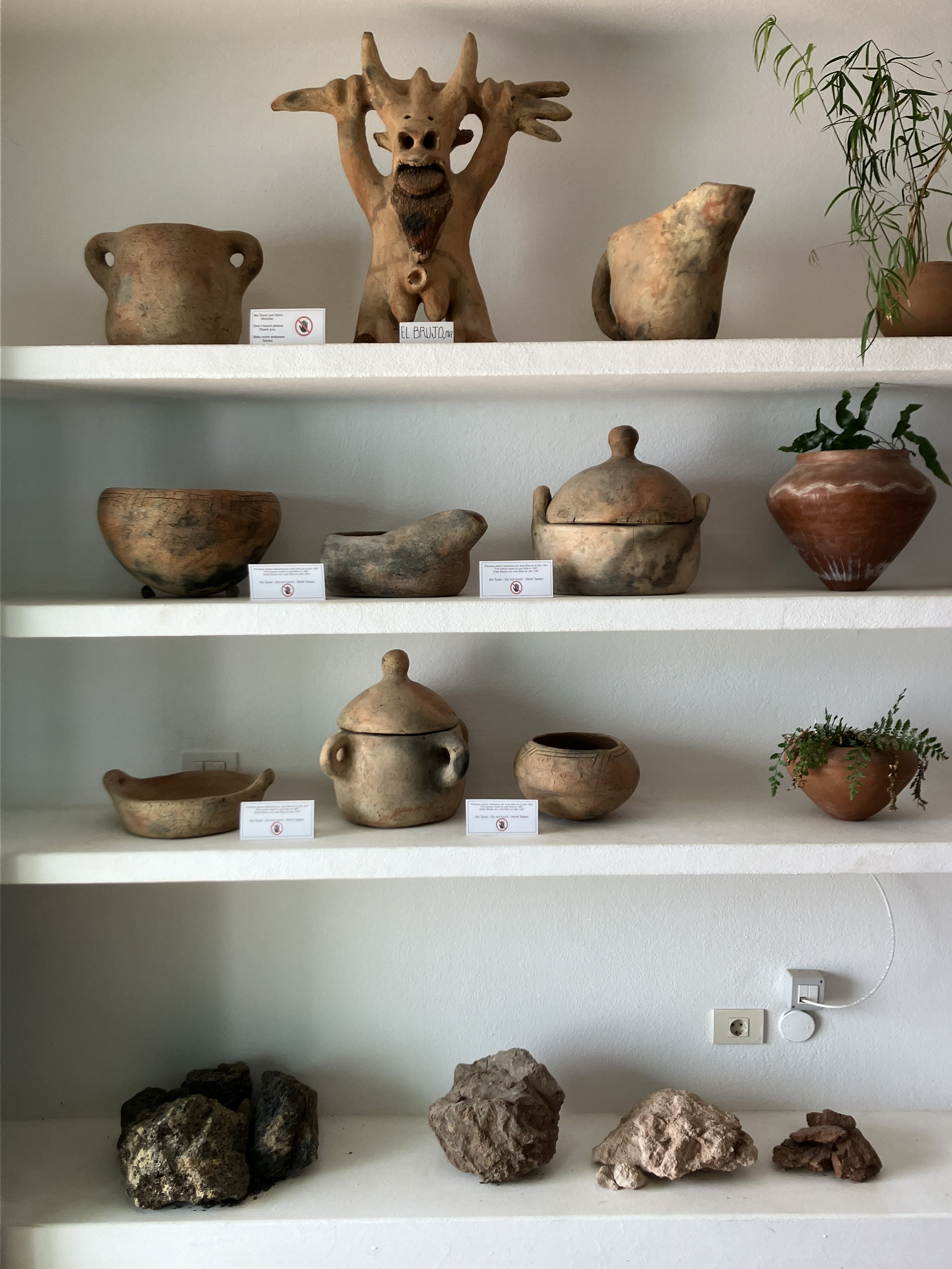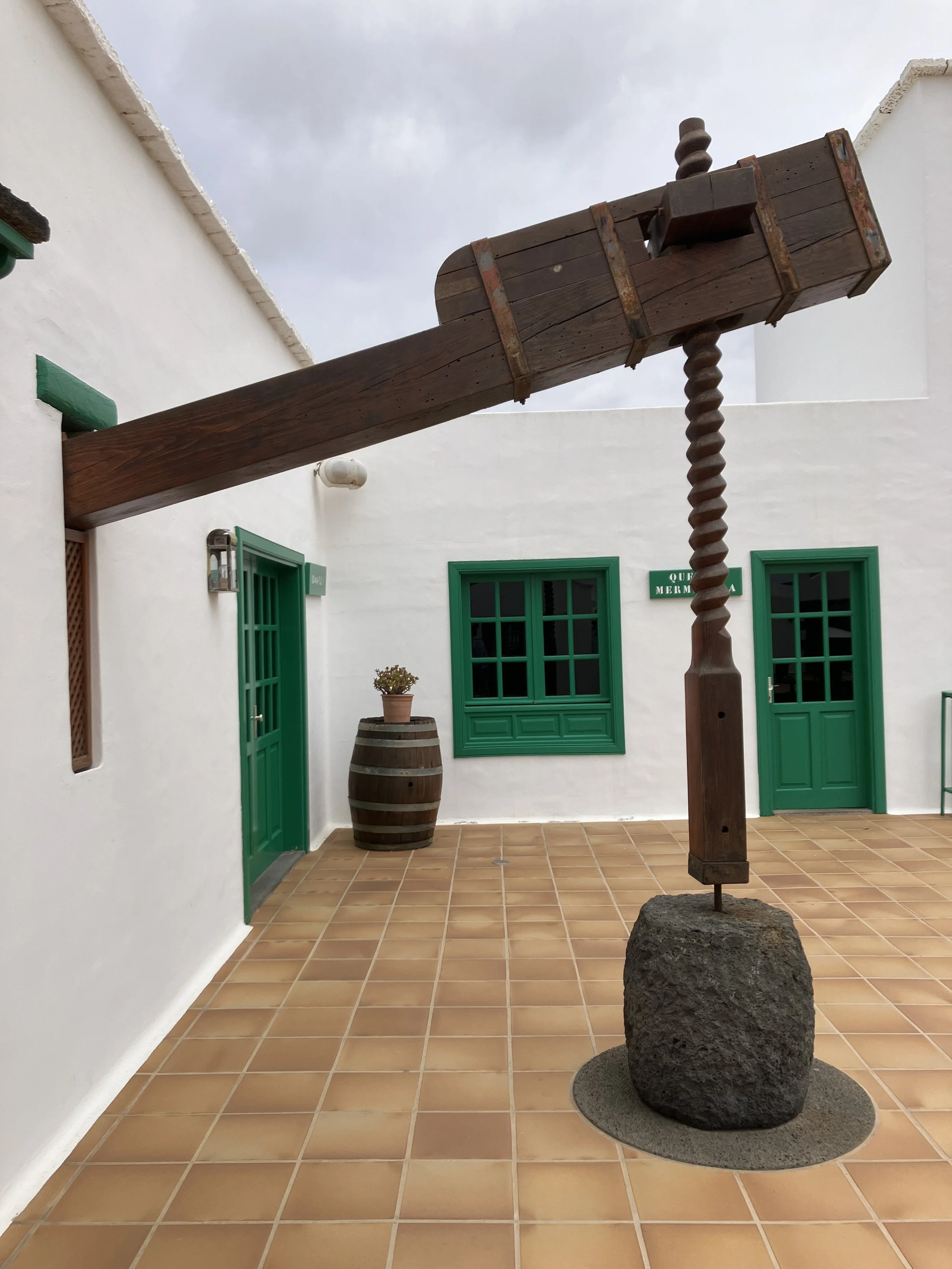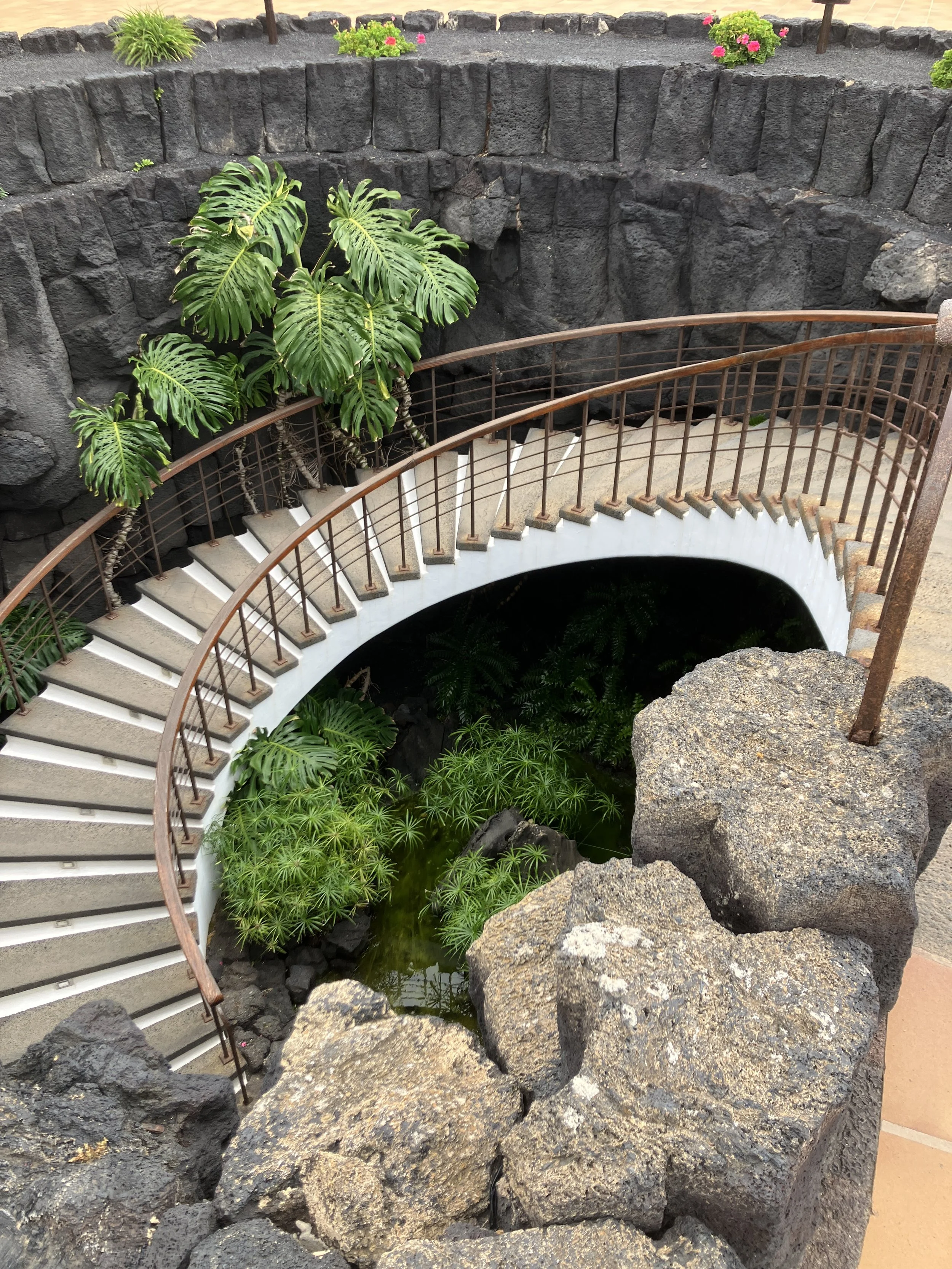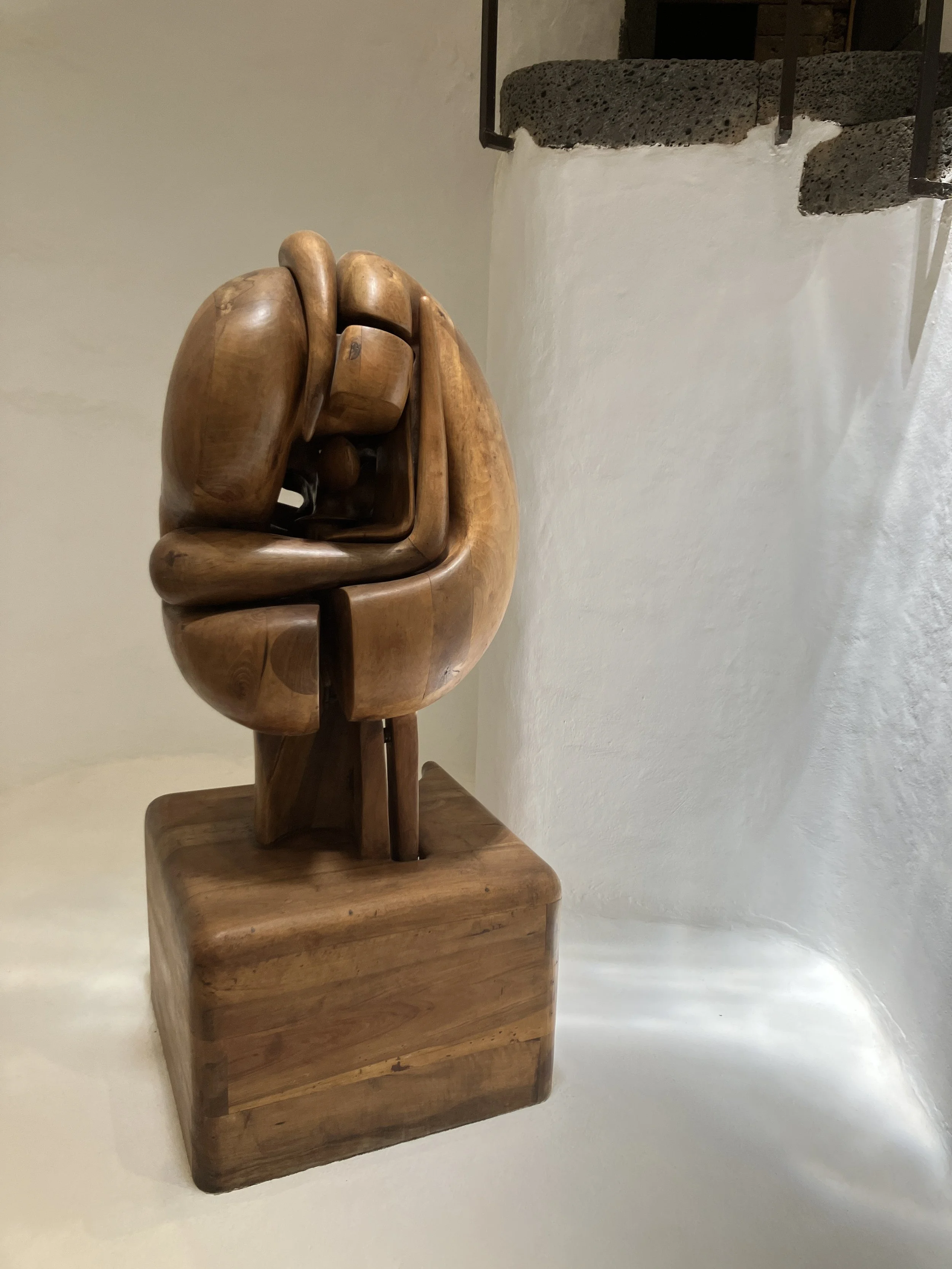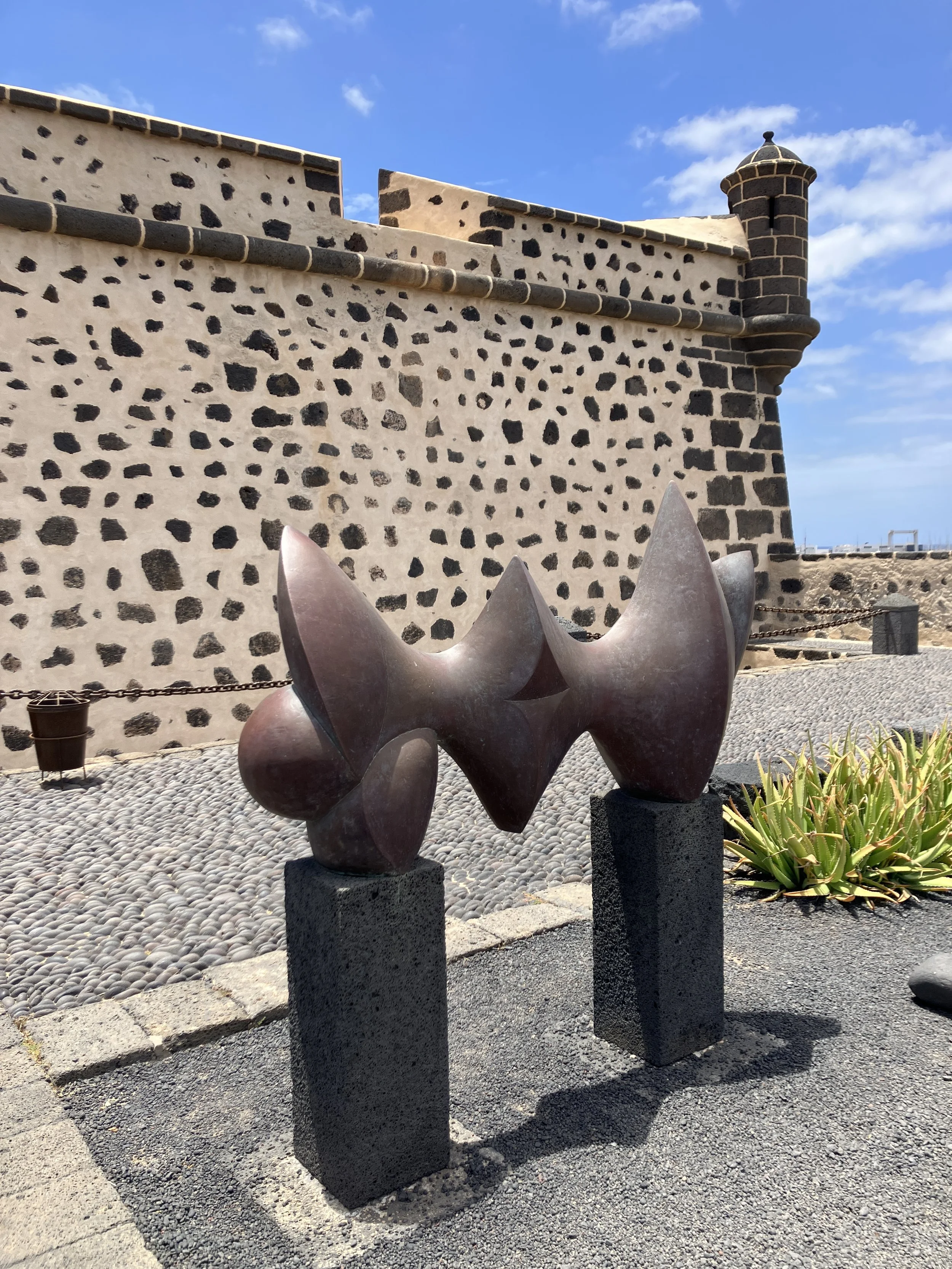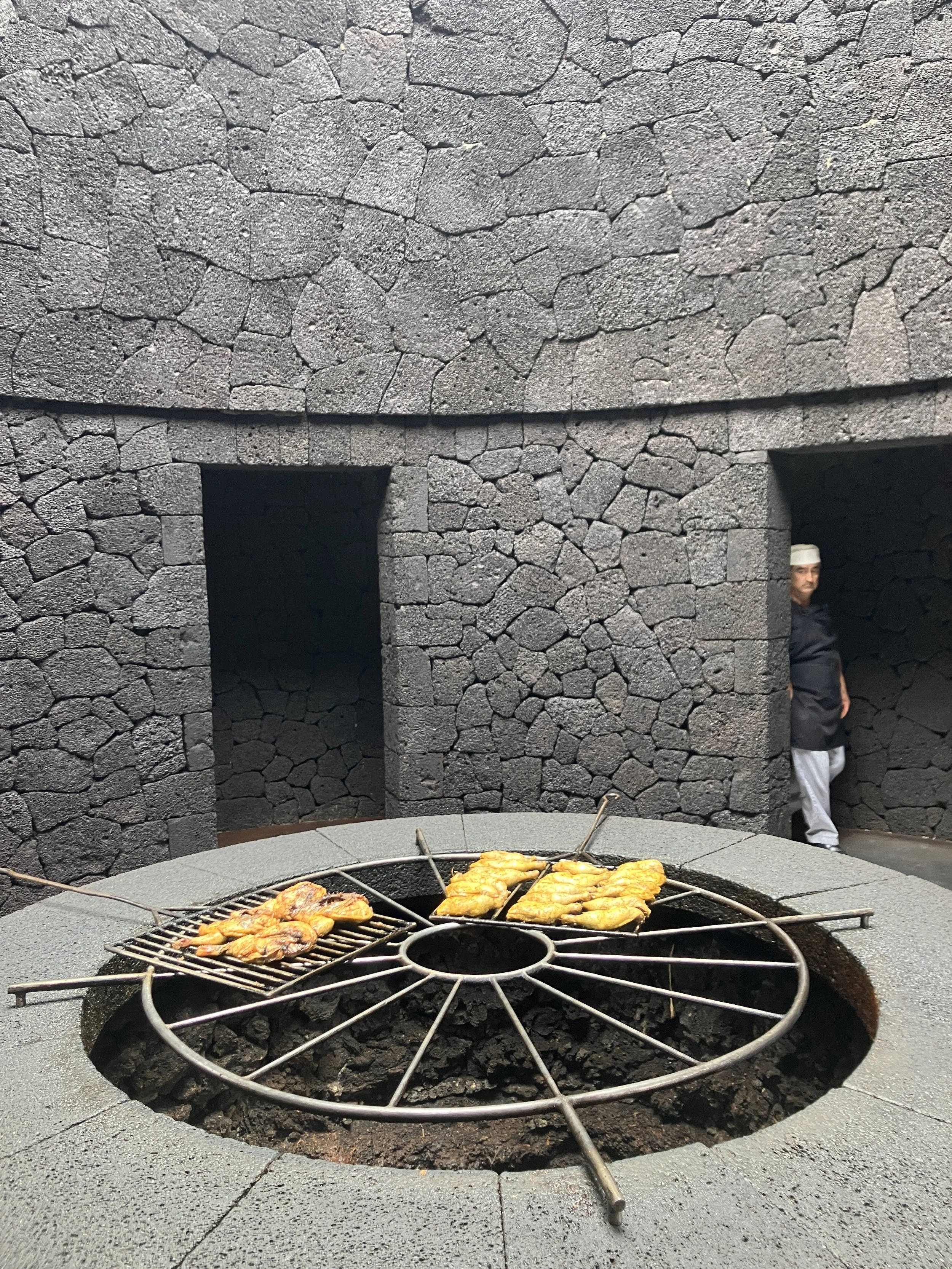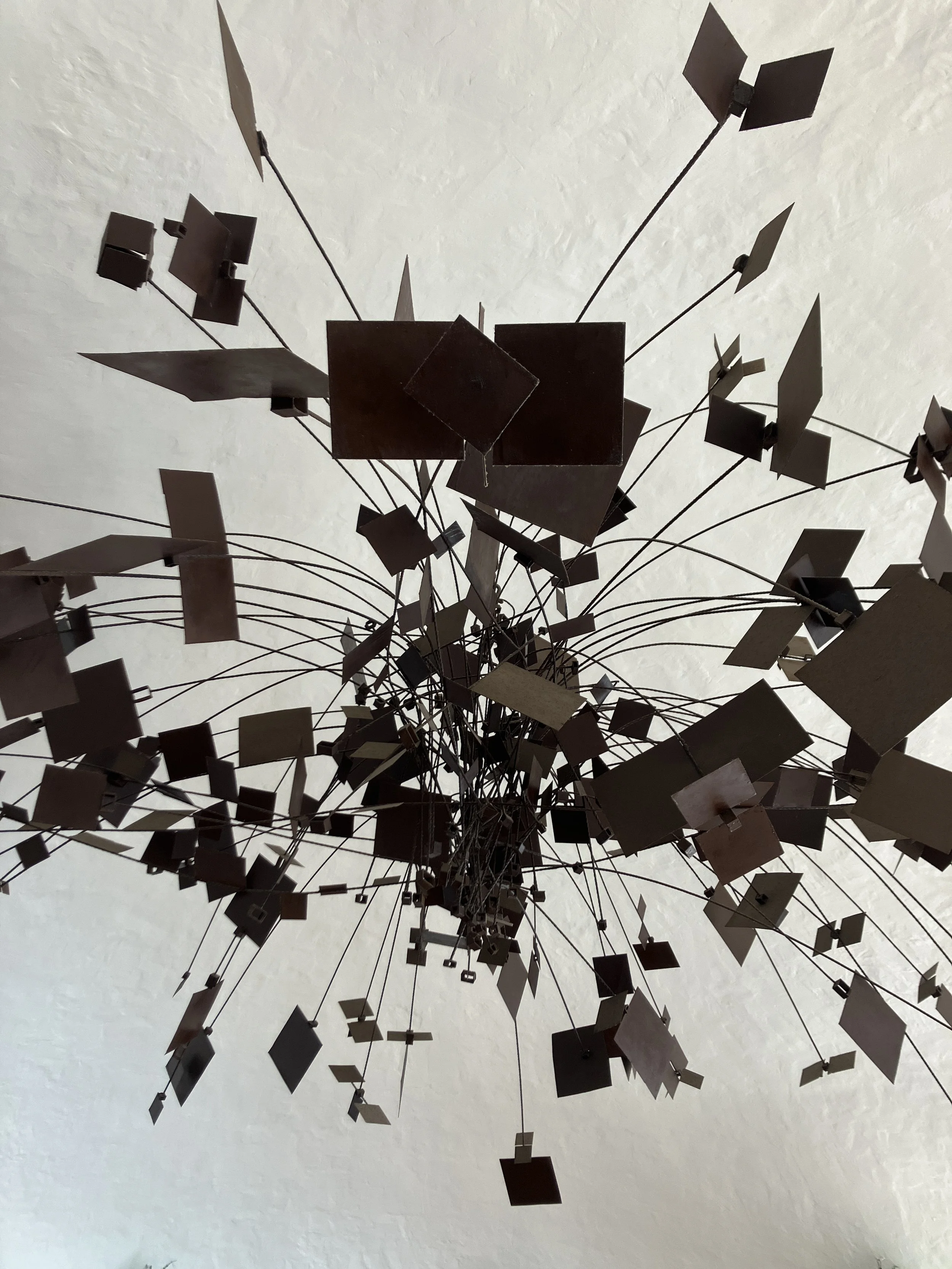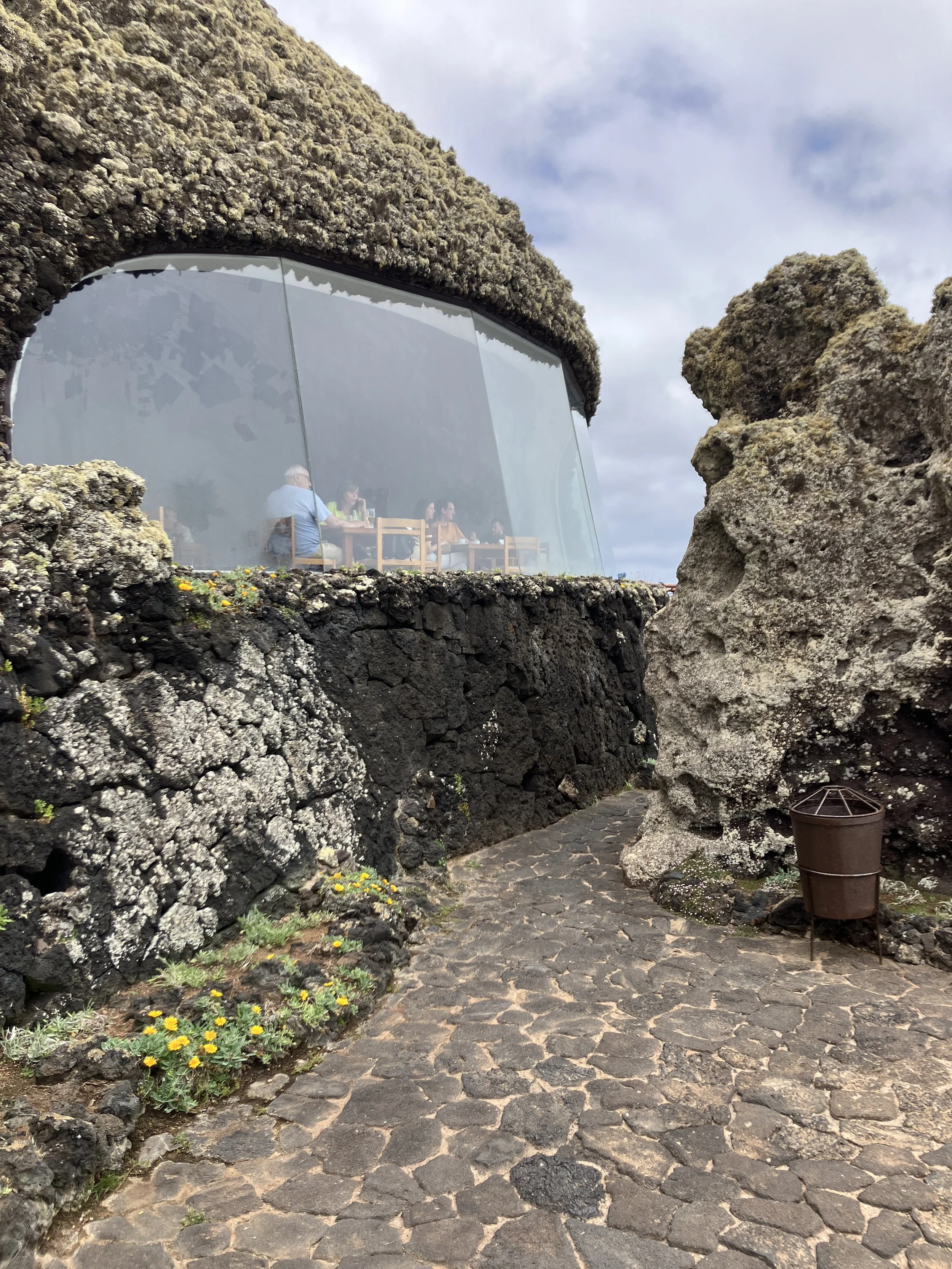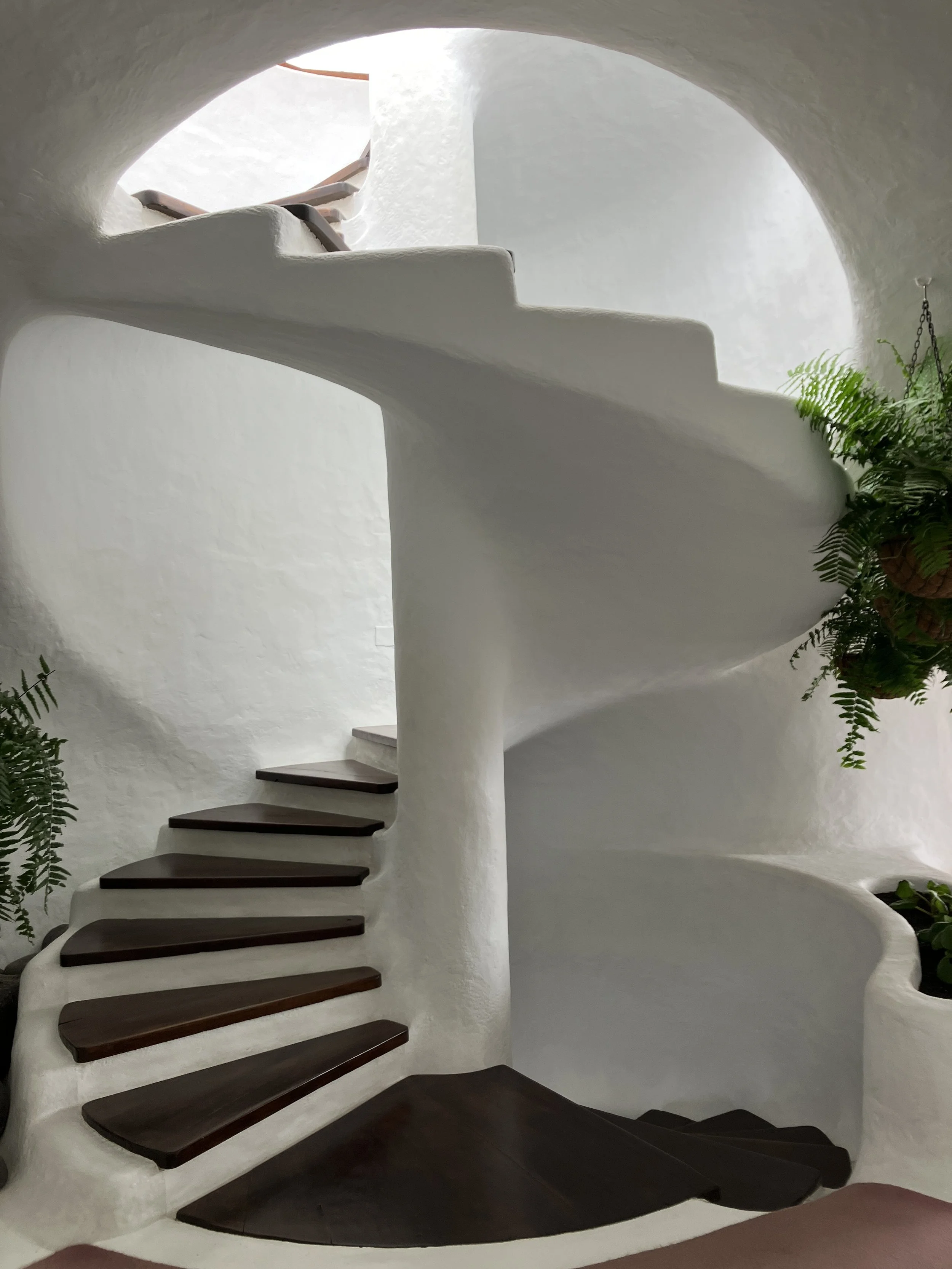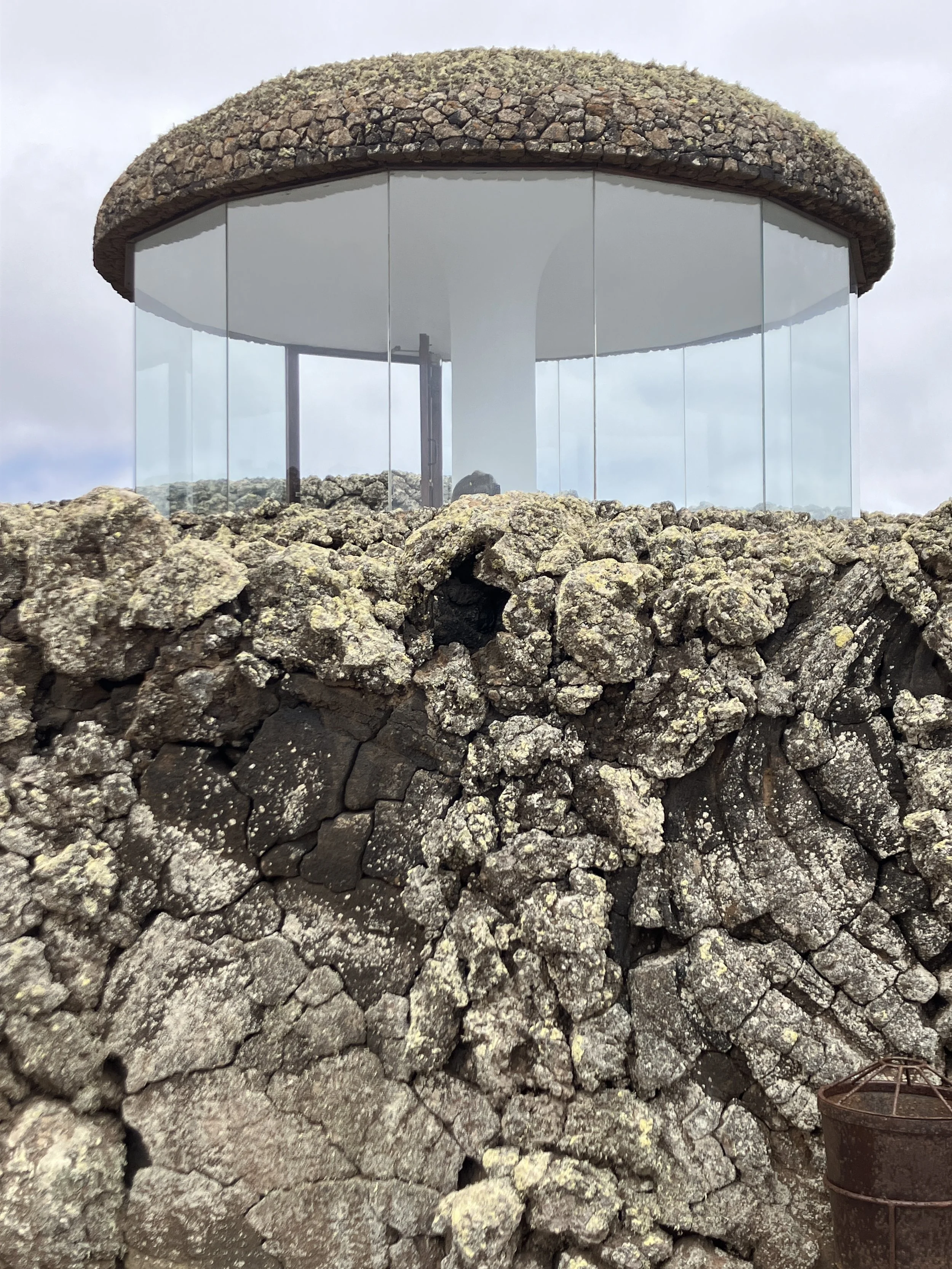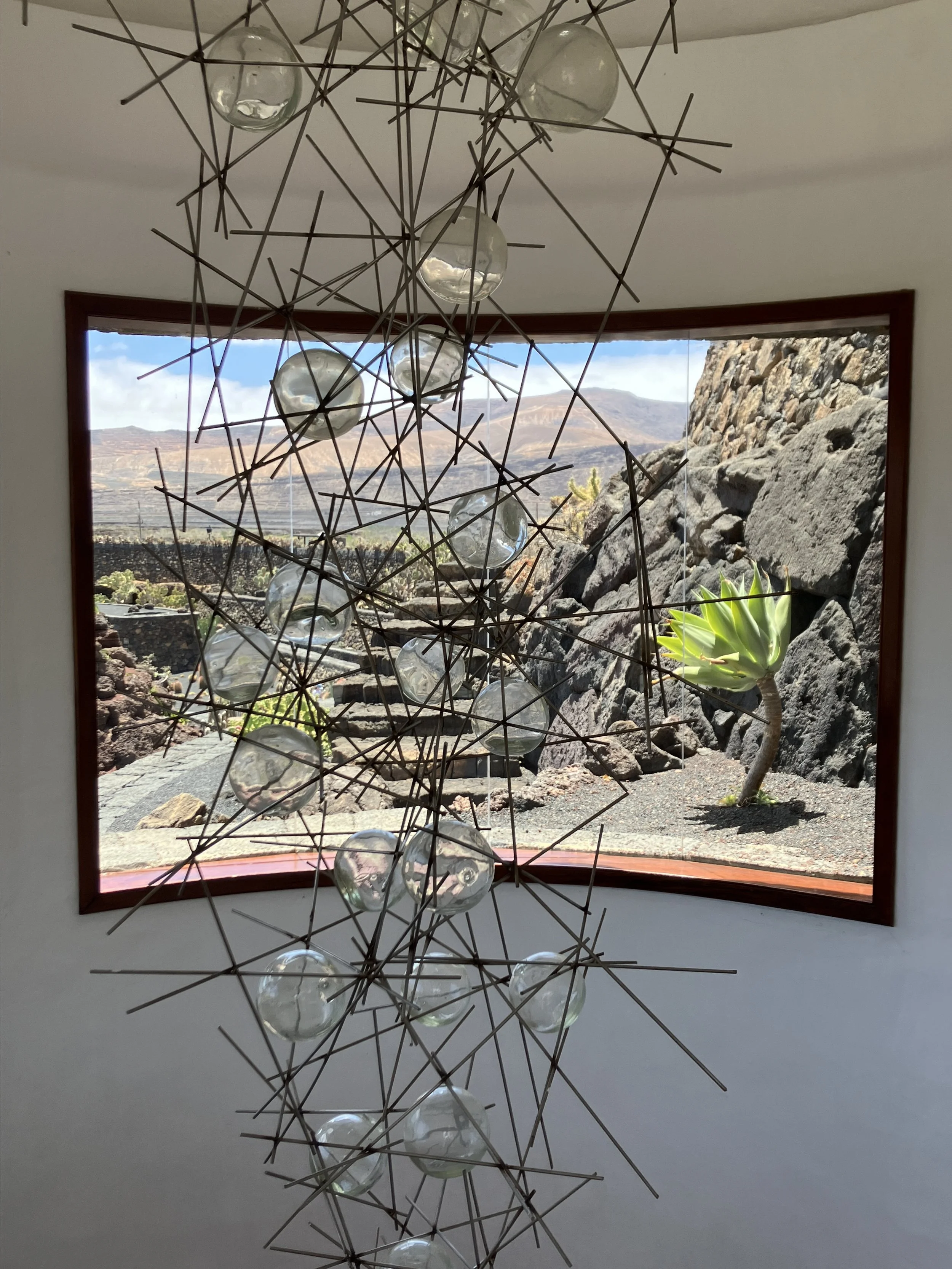Lanzarote: Manrique’s total artwork
Flying into Lanzarote, I was a little surprised to see that the airport is named after César Manrique (1919-1992). This local artist was, I have to admit, unknown to me ahead of planning our visit. A friend had recommended his house museum but I know of no other airport named for a country’s famous artist.*
Little did I know that Manrique is not just Lanzarote’s most famous son, he appears to be almost single-handedly responsible for the current visual experience of the island, both natural and cultural. Not only did he have a hand in the creation and design of almost all of Lanzarote’s key visitor attractions, but he also contributed to the preservation of its landscapes, traditional architecture and ways of life.
If you wish to follow the Manrique trail, the best place to start is the Fundación César Manrique, once his house and then re-designed by the artist as a museum and foundation for preserving his art. Set into bubbles in the volcanic island’s lava, this house is a visual treat as well as a real period piece - think Picasso, meets Austin Powers, meets Bond villain, with a sprinkling of Miró. The Fundación turns his house into a space to show a selection of his works - paintings, collage, drawings - as well as photographs and film about his life. I found the quotations on the walls throughout the house very effective in getting a feel for his exuberant approach to life. The site itself introduces you to Lanzarote’s extraordinary landscape, mixing rooms built out of the lava bubbles, with a lava garden, turquoise blue pool and white spiral staircase.
These latter two, it transpires are some of Manrique’s signature design features, appearing across Lanzarote, from viewing sites to restaurants. On creating the Fundación, Manrique moved north to the smaller town of Haría, to what is now the César Manrique House Museum, adapted from the farmhouse of a palm orchard. His personality shines through here, from the drinks trolley and gracious dining area for entertaining, to the luxurious bathroom and bedroom. The purpose-built studio is sizeable, still filled with everything from objects to materials, and gives a real feel for his approach to painting, inspired by nature, particularly the extraordinary landscape of his native island.
And it is that island which is an active partner in so many of his other contributions to the visitor trail. Jameos del Agua was the first to gain his attention. This cave system forms part of a tunnel that extends from the volcano into the ocean, and is home to endemic species unique to Lanzarote. The Jameos itself is home to extremely rare white albino crabs. The visitor offer includes a restaurant, bar and spectacular auditorium, as well as exploring the cave system. The presence of art, food and drink alongside natural wonder is common to Manrique’s attractions, and again seems core to his personality. The Jameos, though, is also home to an excellent museum that introduces you to the unique nature of Lanzarote’s landscape. This volcanic, often red, and seemingly barren landscape does not just look like Mars. It is similar enough to be useful for researchers working on both Mars and the Moon.
Two of Manrique’s contributions focus on this wider, expansive landscape. The Mirador del Río is a look-out point created from an old artillery post that allows stunning views over the island’s north coast, complete with bar, of course. The Restaurante el Diablo to the south, offers a unique restaurant experience in the heart of Timanfaya National Park. It was Manrique’s suggestion that this area of volcanic landscape be protected. Visitors can now journey through it on a special bus tour, and then eat chicken cooked from the heat of the volcano, possible because the underground temperature is so high.
Manrique also saw the need to preserve and add to the island’s culture. The Jardín de Cactus is a museum to the cactus, created out of a dug landscape formed by farming in the nineteenth century. Cactus fields are key to the experience of the Lanzarote landscape, grown for the cultivation of the cochineal beetle used in dyes. The Jardín was laid out to Manrique’s design and now houses over 1400 species, including some native to the Canary Islands. In the inevitable restaurant (complete with spiral staircase) the visitor can try Lanzarote wine and delicacies made from cactus.
Manrique also instigated the creation of a contemporary art museum in the Castillo San José, designing its transformation into an art gallery and restaurant with spectacular views. He acted as its first director, and exchanged his own pictures in order to develop the collection. In the Casa Museo al Campesino, by contrast, he sought to preserve the traditional farming practices, ways of life, arts and crafts of Lanzarote. The adapted farmhouse presents a traditional home and farming equipment, with a space housing workshops for local craftspeople, in the archetypal Lanzarote architecture of white buildings with green doors and windows. The majority of the Lanzaroteños own homes conform to this consistent style, which contributes markedly to the picturesque quality of most of Lanzarote’s settlements, and again was hard-fought for by Manrique. He campaigned vocally against the cheap, modern buildings that came with the expansion of tourist presence on Lanzarote.
The Campesino is presided over by Manrique’s monumental sculpture ‘Monumento al Campesino’ which presents a farmer and cattle constructed from the old water tanks of wrecked fishing boats. Other Manriquean sculptures preside across the island. His ‘wind toys’ are large playful sculptures that move in the wind. They are formed of bright colours or reflective materials, and serve to visualise another key aspect of the Lanzarote experience - the bright sunshine and strong winds. Realised after his sudden death in a car accident, all of these sculptures were left only as ideas in progress by the artist and show his lasting legacy on his fellow islanders.
Readers may tell, then, that I became increasingly fascinated by this lesser-known artist as I researched and experienced Lanzarote. Given his commitment to, and shaping of the island, it is hardly suprising that his name is immortalised in the airport. Although I think he would deeply disapprove of its modern functional aesthetic.
*Edited 7/7/24 to note that, of course, John Lennon has an airport named after him.



